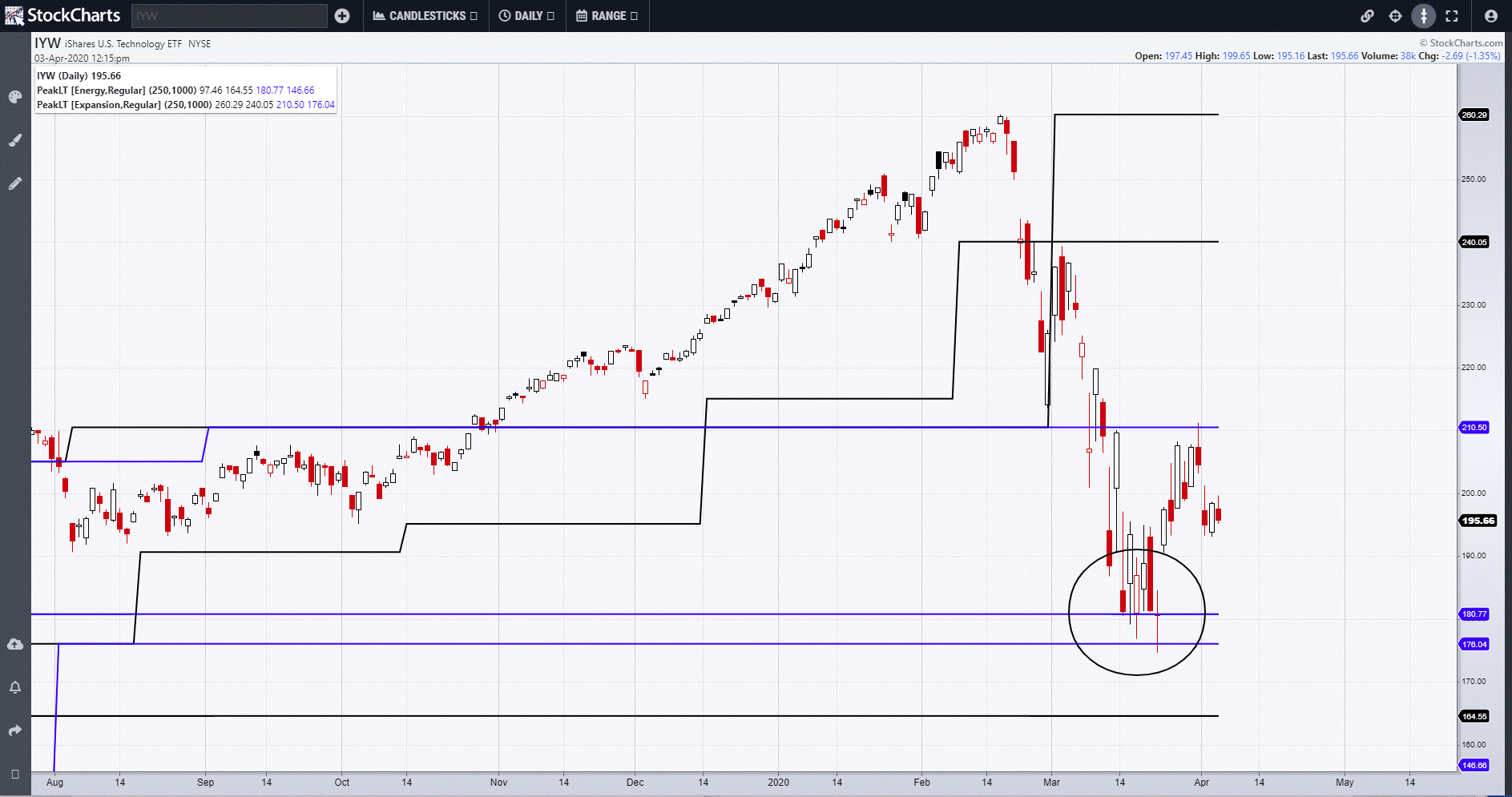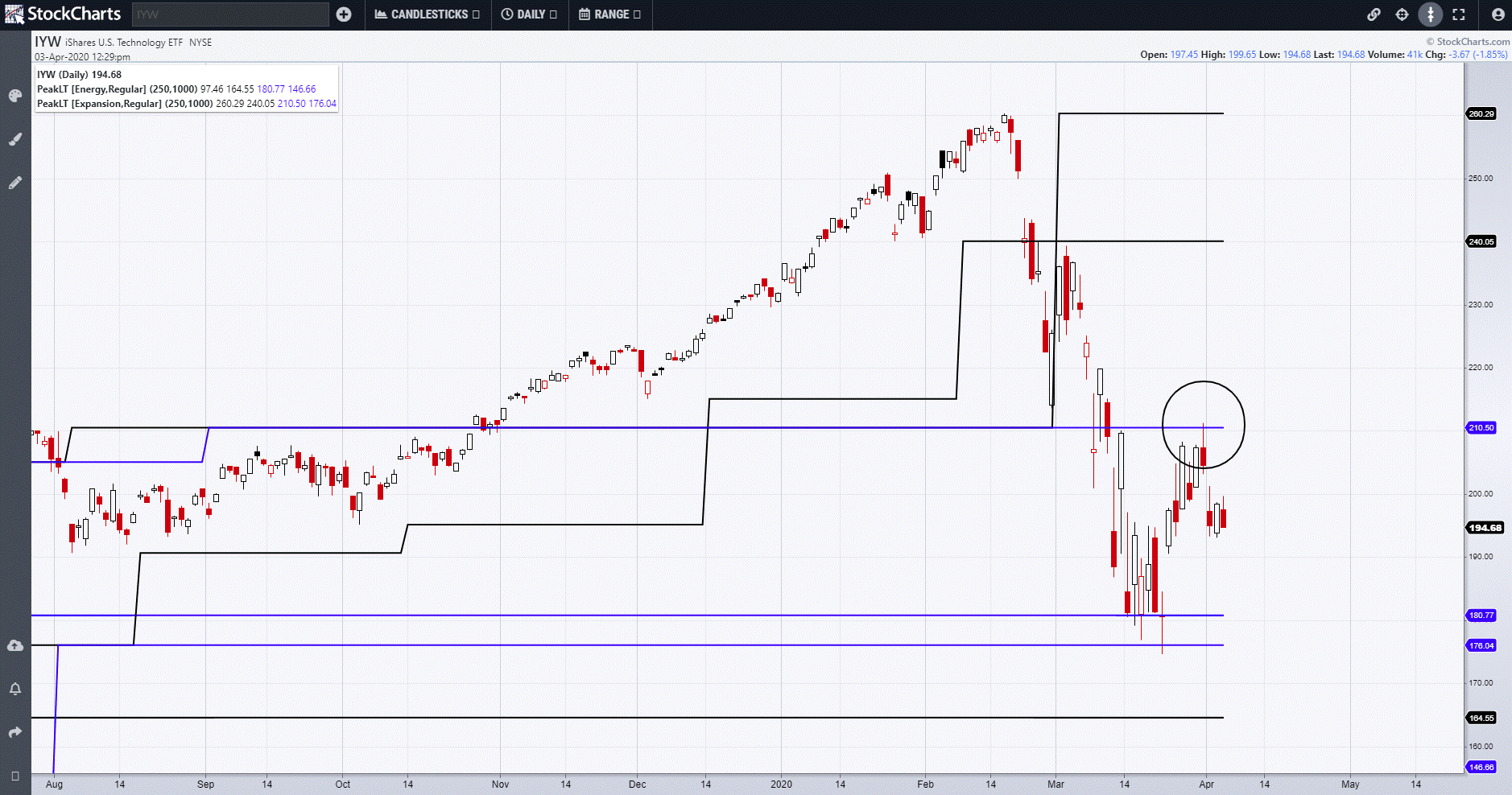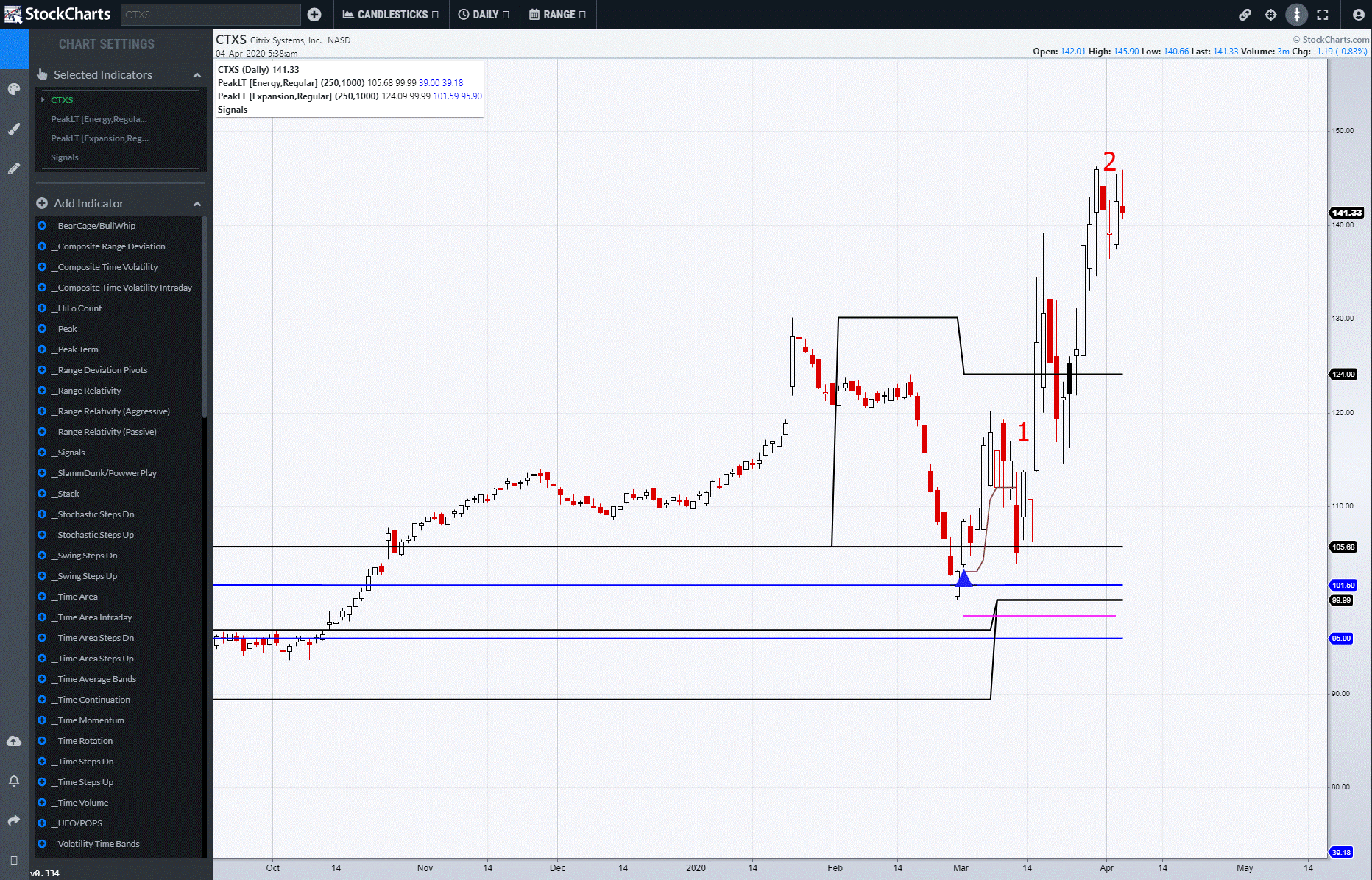Whilst there a multitude of ways of analysing markets, the Fourth Dimension has one core philosophy that makes it unique - namely, the creation of multiple timeframe analyses on one chart.
The idea came to me originally by seeing how difficult it was for me and professional traders to keep track of all the relevant markets and have a firm grip of what was the true picture, in terms of different timeframes and different levels of both momentum and support/resistance. Ask any trader what some of the most important things to them are and they will say things like controlling risk, not missing the opportunity and managing the position. On a crowded desk, filled with screens and information, the poor old chart is often stuck in just one or two windows. The problem is screen real estate.
I had already created many studies that looked at multiple timeframe visualisation, some of which are covered in my first book Trading Time, New Methods in Technical Analysis, published in 2007. What I hadn't done is create a coherent, uniform structure that would suit any trader, giving them the power to decide what their timing timeframe was and be able to see the bigger picture at the same time. Time and Timing are one of the core building blocks to success because, without them, you can have the best ideas in the world and still lose money.
The first step is to establish true measurements of support and resistance. Most people's analyses will simply focus on recent high or low points, moving back in time for what they believe to be significant highs and lows historically. What they haven't done is create a method for quantifying which ones are truly important. My studies, Peak Expansion and Peak Energy, qualify what are.
Peak Expansion begins by measuring the range of any 5-bar sequence in which the middle bar is the highest or lowest point. These are referred to as Swing Points, or Fractals in market terms. That range is then compared to a moving average of range over the previous 1000 bars that each swing point created. If the current Swing Range is greater than 30% above the average of the previous swings, the current one is deemed to be important and the Peak Expansion line is moved to that point. It remains there until the next time the range is greater than 30% of the average.
The higher the timeframe, the more important the level, so, for individual stocks, the timing timeframe is set at daily while Peak Expansion produces weekly (black lines) and monthly (blue lines) support and resistance. This creates a multiple-timeframe picture of where the important levels are in the stock. Peak Energy does the same calculation, but uses volume instead of range.
I have taken the Technology ETF (IYW) to use as a sample chart. Sector analysis is very important to me in identifying opportunity, and Technology has led much of the move up through the years. Then, in the recent collapse in the market, it has led on the way down, performing better than many sectors.
The daily chart shows that there was a powerful zone of Monthly blue line support (circled). Price entered the zone and stabilised.

The support and resistance levels also represent targets and profit-taking points for where price can go. That target was another monthly level, which was resistance, and allows for a limit order to be placed at that point (circled) and take advantage of the 17% gain.

Of course, defining support and resistance is just one part of the puzzle. To simplify this process, Fourth Dimension has a study called Signals which is unique to StockCharts. The chart below shows how it works. Since the beginning of March, there have only 5 qualified buy signals. By qualified, I mean companies that fulfilled fundamental criteria that identified a logical reason for getting involved in a Bear market. This, Sector Rotation and the stocks' performance within that rotation are areas that I place particular focus on. The stock below is Citrix Systems (CTXS), which is involved in Home Office solutions. It was easy to see that this was a growth space, if possibly only in the short term.

Signals is designed to recognise any of my coded patterns, such as BullWhip, and then compute whether they have occurred within a user-defined percentage of a weekly or monthly Energy or Expansion level. The default is 2%. If that happens and Signals is not already in a position in that stock, it will produce a Blue Triangle below the bar in question. On the opening of the following day, it creates the Pink line that is below the Triangle, which represents a dynamically calculated stop loss based on another of my studies, called Range Deviation Pivots. If price closes below that point, it will trigger an exit signal and the trade would have failed.
Looking at the chart once more, you will see that, subsequent to the positive signal, the numbers 1 and 2 are placed above the bars. These represent any of the 8 different pre-programmed studies or patterns, such as Stochastic Steps, that represent a negative and therefore provide an opportunity to decide whether to liquidate part of the position. The option is there to place any of these patterns on a chart individually, which will mark the bar when true. Alternatively, you can change the numbers to a shortened code that identifies what pattern has been triggered.
Fouth Dimension has no secrets, so in the coming weeks I will be delving deeper into my suite of studies and explaining their logic and uses. In the meantime, I can be contacted at shaun.downey@aol.com to answer any questions.
Shaun Downey
